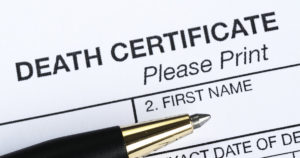CPSC Observes Increase in Child Drowning Deaths
July 1, 2020 According to new data from the Consumer Product Safety Commission (CPSC), there has been a steady rise in deadly child drownings since 2015. A majority of the fatalities occurs in residential pool settings and are linked to a lapse in adult supervision. With unintentional drowning remaining the number one leading cause of death in children under the age of four, it is essential to take precautionary measures that are effecting in limiting these tragedies from happening.
According to new data from the Consumer Product Safety Commission (CPSC), there has been a steady rise in deadly child drownings since 2015. A majority of the fatalities occurs in residential pool settings and are linked to a lapse in adult supervision. With unintentional drowning remaining the number one leading cause of death in children under the age of four, it is essential to take precautionary measures that are effecting in limiting these tragedies from happening.
Fatal Drowning Statistics
Public health and safety officials worry that the number of residential drownings may continue to rise this summer, especially since many public and community swimming pools (in addition to some popular beaches) are currently closed. In the last five years, approximately 70% of accidental drownings happened in residential locations such as a neighbor’s home, the child’s house, or a friend or family member’s residence. Children 4-years-old and younger are not the only ones at risk for these devastating accidents: the CPSC reports that young people 15-years-old and younger are prone to experiencing them as well.
According to the CPSC’s data, more than 55% of the deadly drownings that occurred from 2015 to 2017 were the result of a gap in adult supervision; more than three-quarters of these fatalities involved children under the age of 5-years-old. But deadly drownings are not the only pool-related hazards that exist for kids and teens: each year, emergency departments treat 6,700 young people for nonfatal drowning and submersion injuries. Even with nonfatal drowning-related injuries (such as hypoxic brain injuries, or a type of injury that results from a lack of oxygen traveling to the brain) permanent and life changing disabilities can occur.
Several factors increase a person’s risk of drowning. Here are just a few examples of known risk factors:
- Overestimating swimming abilities or the inability to swim altogether
- Insufficient adult supervision
- Certain risk taking behaviors (such as diving, flipping, etc.)
Safety Tips to Prevent Drowning
Parents and caregivers can take steps to prevent unintentional fatal and nonfatal drownings from happening. Always keep pool areas secure, which helps keep children from entering the space unsupervised. The CPSC recommends installing four-sided fencing accompanied by a self-latching, self-closing gate around all residential pool or spa areas. Here are some of the agency’s other effective safety tips to help limit the chances of an unintentional drowning from occurring:
- Make sure you know how to swim and teach your child to swim as well
- Never leave a child unattended in or around a body of water (this includes not only pools and spas but fountains, bathtubs, decorative ponds, and buckets)
- Always designate an adult “Water Watcher”. Water watchers should avoid all distractions (like texting or reading) and provide constant supervision
- Install protective measures like fencing, self-closing gates, and alarm systems that send notifications when someone enters the pool or spa area
- Learn how to perform CPR on both children and adults
- Make sure that your pool or spa’s drain covers are in compliance with federal safety standards
- Teach children to avoid pipes, drains, and any other openings that can lead to entrapment
Even with protective measures in place, accidents still happen. In some cases, a pool safety product may be defective or fails to adequately secure an area. If a dangerous product or a defect results in injury to a child or death, you may want to consider filing a products liability claim. To learn more about filing a claim, contact a representative online now who can help.
Philadelphia Products Liability Lawyers at Galfand Berger, LLP Representing Injured Individuals Since 1947
With offices located in Philadelphia, Bethlehem, Lancaster, and Reading, Galfand Berger serves clients throughout Pennsylvania and New Jersey. To schedule a consultation, call us at 800-222-8792 or complete our online contact form.
 Google Screened
Google Screened
